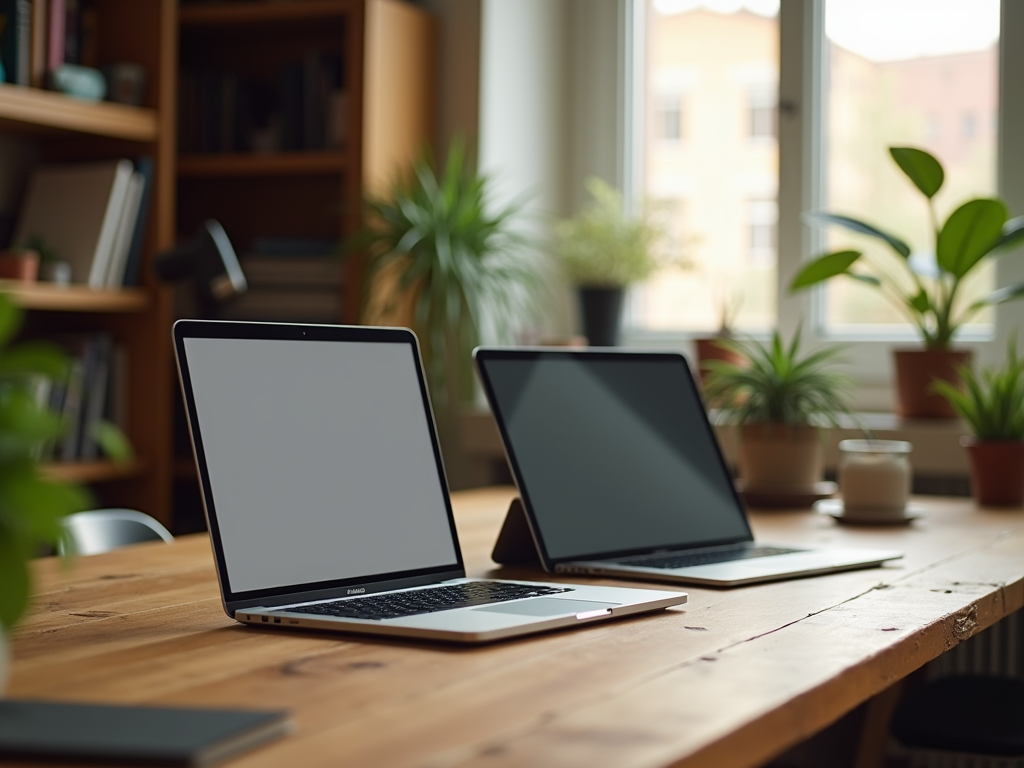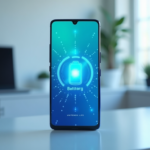When deciding between a MacBook and an iPad, the answer largely depends on your specific needs and how you plan to use the device. For instance, if you require a powerful machine for multitasking, video editing, or programming, a MacBook is likely the better choice. Conversely, if you need a more portable, touch-based device for casual browsing, note-taking, or media consumption, an iPad may serve you better. In this article, we will explore the key differences between these two Apple products to help you make an informed decision on which is better for you.
Design and Portability

One of the most notable differences between the MacBook and iPad is their design and portability. The MacBook features a sleek and robust laptop design which makes it heavier but offers the benefit of a physical keyboard and larger screen experience.
The iPad, on the other hand, is ultra-light and compact, making it highly portable. You can easily slip it into a bag or carry it around without feeling the weight. Let’s break down the key design aspects:
- MacBook: Traditional laptop design, sturdy build, and available in various sizes.
- iPad: Lightweight, slim profile, perfect for on-the-go use.
- Accessories: Both devices offer accessories like keyboards and styluses, but the MacBook’s built-in keys sometimes offer a better typing experience.
Ultimately, if portability is a major concern for you, the iPad’s portability appeals to those who prefer to work or play on the move.
When it comes to performance and functionality, a MacBook outshines an iPad in several key areas. The MacBook is equipped with more powerful processors and a larger RAM, allowing it to handle demanding tasks such as high-end video editing or running complex software. For creative professionals or heavy multitaskers, this is vital. On the other hand, iPads can be used for a range of functions but may struggle with tasks that require intensive processing power.
Here’s a quick comparison of performance capabilities:
- MacBook: Ideal for graphic design, programming, and multitasking with heavy applications.
- iPad: Great for light tasks such as web browsing, streaming videos, and simple document editing.
While the iPad has made strides with the introduction of the M1 chip in its Pro model, the MacBook generally still remains the go-to for serious computing tasks.
Operating System and Software

The operating system is another crucial element when comparing these devices. The MacBook runs on macOS, which supports a full range of professional software that is often not available on the iPad. This makes it a better option for developers, graphic designers, and other professionals who rely on specific software applications.
iPads utilize iPadOS, which is designed for touch-based interactions. While iPadOS has grown in capability and now includes features like multitasking and a wider range of available apps, it still lacks some of the functionality offered by macOS. Here’s a list of software capabilities for both:
- MacBook:
- Full versions of Adobe Creative Suite
- Professional software for coding and app development
- Advanced spreadsheet management with Microsoft Excel
- iPad:
- Basic versions of productivity apps
- Creative applications available through the App Store, though they may lack advanced features
- Ideal for lightweight tasks and casual use
Choosing between these devices largely determines on the software requirements of the user, where professionals may lean towards the MacBook, while casual users might find iPadOS sufficient.
Battery Life
Battery life is often an essential consideration when choosing between a MacBook and an iPad. Generally, both devices offer commendable battery longevity, but the user experience can vary significantly between the two. The MacBook often provides a solid all-day battery life, able to support rigorous use from morning to evening.
The iPad, being more efficient and streamlined for specific tasks, also delivers impressive battery performance. Users often report lengthy usage times without needing a recharge. Factors to note include:
- MacBook: Battery life can range from 10 to 20 hours, depending on the model and usage conditions.
- iPad: Typically offers around 10 hours of use on a single charge, ideal for extended media consumption.
For users who intend to take their devices on long travels or use them away from power sources, both devices have commendable longevity, but the MacBook may offer slightly more consistent performance under demanding situations.
Price and Value
Price is often a deciding factor in any tech purchase, and the comparison between a MacBook and an iPad does not deviate from this norm. Generally speaking, a MacBook tends to be more expensive due to its advanced hardware and professional capabilities.
The iPad offers a more budget-friendly option, especially with several models available at different price points, which is beneficial for casual users or students. Pricing can be summarized as follows:
- MacBook:
- Starts from approximately $999 for base models.
- Higher-end models can exceed $2,500.
- iPad:
- Starts from around $329 for the basic iPad.
- iPad Pro models can range up to $1,299 and beyond.
While the iPad might initially be more affordable, it’s essential to consider what you are getting in total value, as professional users may require the capabilities provided by a MacBook, which could prove worth the extra investment in the long run.
Conclusion
Choosing between a MacBook and an iPad ultimately comes down to your personal needs and preferences. If you need a device primarily for creative, professional, or intensive tasks, the MacBook is more than capable of handling just about everything you throw at it, making it the better choice for power users. However, if you favor portability, casual usage, and web-based applications, the iPad shines with its user-friendly touch interface and lightweight design.
Evaluate what you plan to do with your device and choose accordingly, whether that means leveraging the full power of macOS on a MacBook or enjoying the simplicity and versatility of iPadOS on an iPad.
Frequently Asked Questions
1. Can I use a MacBook for gaming?
Yes, while gaming is not the primary purpose of MacBooks, they can handle various games. However, a dedicated gaming PC or console may provide a better experience for serious gamers.
2. Is the iPad suitable for professional work?
Yes, the iPad can handle professional tasks, especially with apps like Microsoft Office or Adobe products. However, the lack of some software compared to a MacBook may limit its capabilities for heavy workloads.
3. Can I use an iPad as a laptop replacement?
For many casual users, the iPad can serve as a laptop replacement. It offers apps and functionalities for browsing, media consumption, and light productivity. However, for extensive multitasking or software requirements, a MacBook may be necessary.
4. Which device is better for students?
This depends on the student’s needs. An iPad is ideal for note-taking and reading eBooks, while a MacBook may be better for writing papers, coding, or using specialized academic software.
5. Do I need to buy accessories for the iPad?
While not strictly necessary, accessories like the Apple Pencil or a keyboard can enhance the iPad’s functionality and improve your overall experience, especially for note-taking or typing longer documents.


